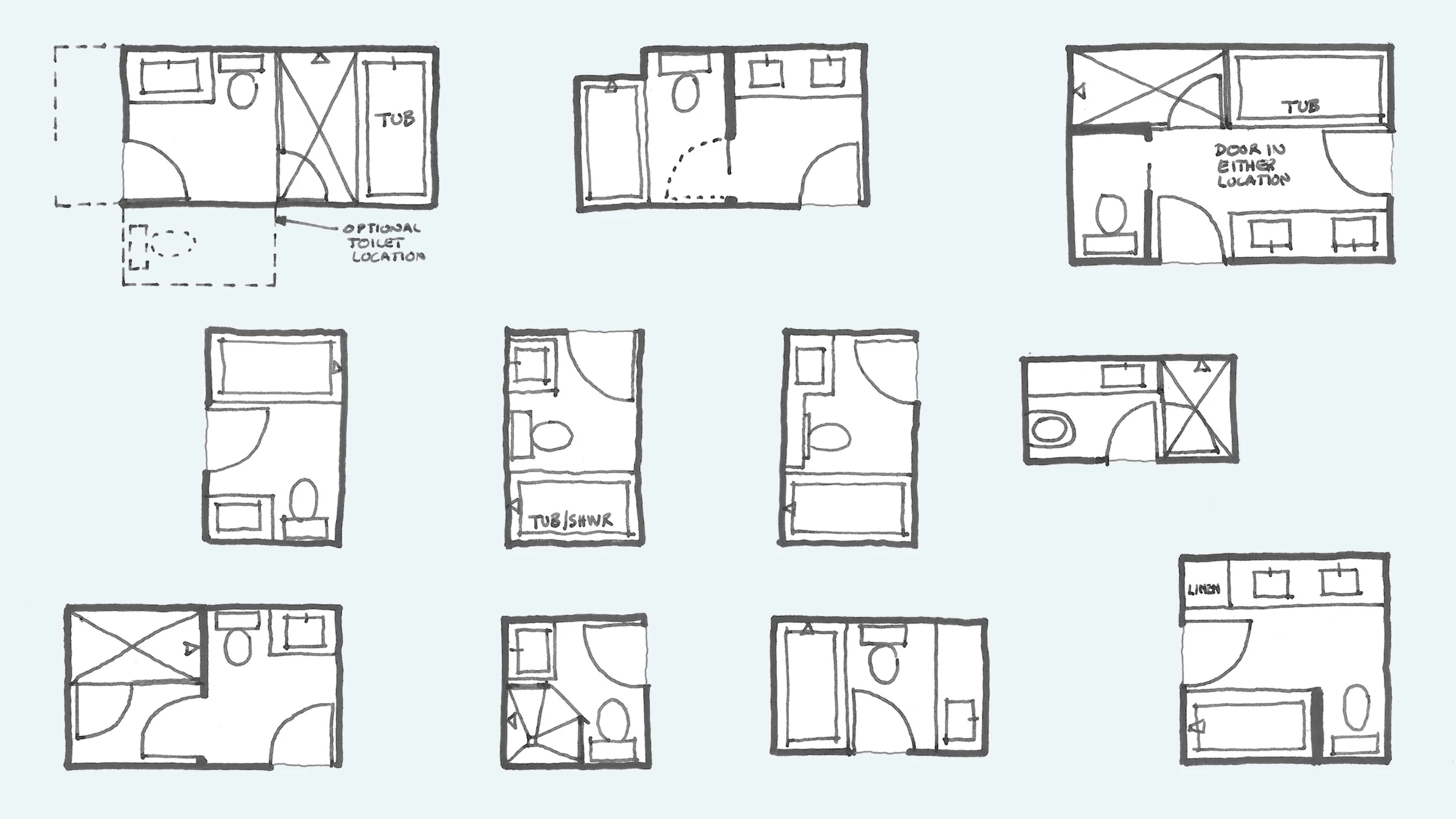Understanding Small Bathroom Dimensions: Small Full Bathroom Dimensions

Small bathrooms, often found in older homes or apartments, can pose design challenges but also offer opportunities for creative and functional solutions. Understanding the typical dimensions and common layouts is crucial for maximizing space and creating a comfortable and aesthetically pleasing environment.
Typical Dimensions, Small full bathroom dimensions
Small bathrooms generally have a limited footprint, with dimensions ranging from 30 to 60 square feet. The exact size can vary depending on the age and style of the building. Here are some typical examples:
| Dimension | Description |
|---|---|
| 30-40 square feet | A very small bathroom, typically found in older apartments or studio units. |
| 40-50 square feet | A small bathroom that offers slightly more space for maneuverability. |
| 50-60 square feet | A moderately sized bathroom, often found in newer homes. |
Common Layouts
Small bathroom layouts are typically designed to maximize space and functionality. Common layouts include:
| Layout | Description |
|---|---|
| Single-Vanity Layout | Features a single vanity with a sink and storage space, a toilet, and a shower or bathtub. |
| Corner Layout | Utilizes a corner space for the shower or bathtub, freeing up wall space for a vanity and toilet. |
| Floating Vanity Layout | Employs a floating vanity that appears to be suspended, creating an illusion of more space. |
| Combined Shower/Tub Layout | Combines a shower and bathtub into one unit, saving space and providing flexibility. |
Design Challenges and Considerations
Designing a small bathroom requires careful planning and consideration of several factors, including:
- Limited Space: The most significant challenge is working within a confined area. Every inch of space needs to be utilized efficiently.
- Functionality: Ensuring that all essential fixtures are accessible and easy to use is crucial in a small bathroom.
- Storage: Maximizing storage space is essential to keep the bathroom organized and clutter-free.
- Aesthetics: Creating a visually appealing and relaxing environment is important, even in a small space.
Maximizing Space in a Small Bathroom

Transforming a small bathroom into a functional and visually appealing space requires clever design strategies. By implementing smart solutions and embracing a minimalist approach, you can create the illusion of a larger bathroom while maximizing its usability.
Creating the Illusion of More Space
Mirrors play a crucial role in expanding the perceived size of a small bathroom. Strategically placed mirrors can reflect light, creating a sense of depth and openness. Consider installing a large mirror above the vanity or using a mirrored backsplash behind the sink.
Light colors are essential for making a small bathroom feel larger. Opt for light shades of paint, tiles, and fixtures. Lighter colors reflect light more effectively, brightening the space and making it appear more expansive.
Designing a Small Bathroom Layout
The following table illustrates a layout for a small bathroom, featuring a shower, toilet, and vanity. This layout maximizes space while maintaining functionality:
| Area | Dimensions | Description | ———- | ———– | ——————————————————————— | Shower | 3' x 3' | A compact shower stall with a glass door to visually open the space. | Toilet | 2' x 3' | A space-saving elongated toilet with a compact tank. | Vanity | 3' x 3' | A floating vanity with a small sink and ample storage space. |
|---|
Benefits of Using Mirrors, Light Colors, and Vertical Storage Solutions
Mirrors, light colors, and vertical storage solutions offer several advantages for small bathrooms:
- Mirrors: Mirrors amplify natural light, creating a brighter and more spacious feel. They also reflect the surrounding space, making the bathroom appear larger than it actually is.
- Light Colors: Light colors reflect light, making the space appear brighter and more expansive. They also create a sense of calm and serenity, enhancing the overall ambiance.
- Vertical Storage Solutions: Vertical storage maximizes floor space by utilizing the vertical area. Wall-mounted shelves, cabinets, and organizers allow for efficient storage without taking up valuable floor space.
